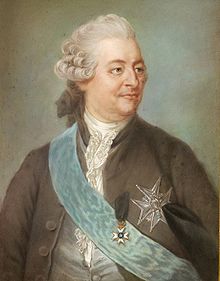
Back تشارلز د جير ARZ Charles de Géer AST Карл дэ Геер Byelorussian Charles De Geer Catalan Charles De Geer Czech Carl De Geer German Charles de Géer Spanish Charles de Geer French Charles De Geer Hungarian Charles De Geer Italian
Charles De Geer | |
|---|---|
 Portrait by Gustaf Lundberg | |
| Born | 30 January 1720 Finspång, Sweden |
| Died | 7 March 1778 (aged 58) Stockholm, Sweden |
| Alma mater | Utrecht University |
| Known for | Mémoires pour servir à l'histoire des insectes, 8 vols. |
| Awards | Knight, Order of the Polar Star (1761)[1] Commander Grand Cross, Order of Vasa (1772)[1] |
| Scientific career | |
| Fields | Entomology |
| Author abbrev. (zoology) | de Geer, De Geer |
Charles De Geer (30 January 1720 – 7 March 1778) was an entomologist, industrialist, civil servant and book collector. He is sometimes referred to as Charles the Entomologist, to distinguish him from other relatives with the same name.[2] Charles De Geer came from a prominent Swedish-Dutch family. Born in Sweden, he spent most of his childhood and youth in the Dutch Republic. At the age of 18 he moved back to Sweden and would spend the rest of his life there. Upon his return to Sweden, he took over the management of the ironworks of Lövstabruk. He was a successful businessman and with time became one of the richest men in Sweden, head of an early industry employing around 3,000 people. He had a successful civic career, became Marshal of the Court and was elevated to the rank of friherre (baron) in 1773.
De Geer had developed an interest in natural history and particularly entomology when he was still young. After his return to Sweden, his interest transformed into a serious scientific pursuit. He was elected a member of the Royal Swedish Academy of Sciences in 1739 and a corresponding member of the French Academy of Sciences in 1748. He published his main work on entomology, Mémoires pour servir à l'histoire des insectes, in French in eight volumes between 1752 and 1778. In it, he provided descriptions of the behaviour of over 1,400 insect species. In his writings, De Geer among other things brought the importance of insects as pollinators to the attention of the scientific community, and criticised the idea of spontaneous generation.
De Geer was also a book collector. He used his library for his research, but it contained books on many other subjects in several languages. Its sumptuous and rare works, including a collection of music scores, indicate that it was also intended as a way to raise De Geer's social status as an aristocratic collector. Since 1986 it belongs to Uppsala University Library, but most of it is still kept in situ in Lövstabruk, in the pavilion De Geer constructed to house the library.
- ^ a b Dahlgren & Tullgren 1931, p. 482.
- ^ Sjökvist 2022, pp. 2–3.